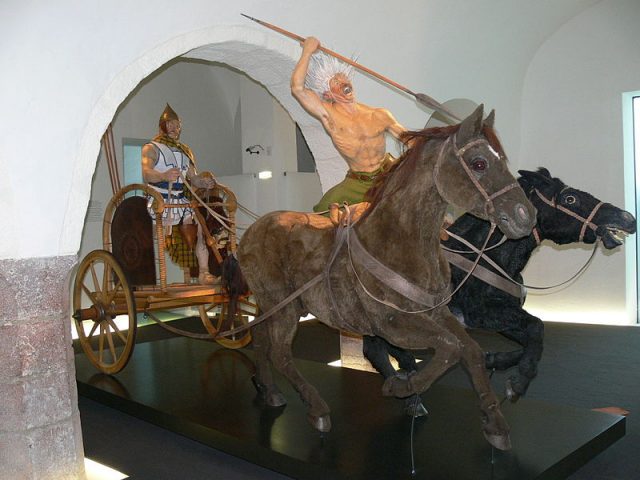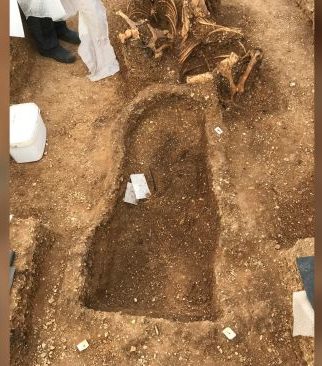An Iron Age tomb has been unearthed in Italy with the remains of a mystery man, perhaps a prince or even a king, from a forgotten culture. When a new sports complex was being planned for Corinaldo in central Italy, the site was examined by archaeologists of ArcheoNevola from the University of Bologna using geophysical prospection, aerial surveys, integrated resistivity with vehicle-drawn ARP system, magnetic prospection and targeted archaeological excavation.
According to study researcher Federica Boschi, senior assistant professor of methods of archaeological research at the Department of History and Cultures at the University of Bologna in her research paper at cambridge.org, along with the Soprintendenza Archeologi Marche and the Municipality of Corinaldo, the site was surveyed using the new modern non-invasive technology and was found to hold several graves including an Iron Age grave that belonged to a very wealthy and in all probability very important person from the tribe of the Piceni Culture, complete with a chariot inside.
Princely tomb of Iron Age mystery man discovered in Italy. And there’s a chariot inside. https://t.co/6Br5k73sYU pic.twitter.com/eER09vRq8b
— Live Science (@LiveScience) January 23, 2020
The Piceni were a relatively little-known tribe that lived on the Adriatic coast of Italy from Rimini south about two hundred miles to Sangro Province and according to website Britannica, traded with the Greeks in the 7th century B.C. Most of their art was brought from Greece and other locations around the Adriatic Sea. The Piceni were most likely fiercesome but were conquered by the Romans in 286 B.C.

The grave contents were found to be a bronze helmet, iron skewers, a bronze situla – an elaborately decorated bucket, several different types of weapons, some bronze vessels and over one hundred ceramic vessels including an olla, a large ceramic pot believed to be from ancient Daunia which is now Apulia in southern Italy.

It is possible it was a commemoration gift celebrating the grave owner’s military, political and economic status. The remnants of a chariot with iron wheels further assures us of the high station of the deceased. The site shows very few of the objects are intact but as this is an agricultural field and had been plowed for thousands of years, the condition of the artifacts are still remarkable. At LiveScience, Boschi said the grave was originally covered by a peaked mound in which she believes the remains were left and subsequently lost due to the agricultural activity.
An aerial survey showed three large circles in a field near a road that follows the same path as an ancient road and attracted the attention of Boschi and her team. After electrical testing for deeply disturbed soil and magnetic testing for metal they discovered the tomb in the center circle which turned out to be the outline of a ninety eight foot wide moat around the approximately ten by nine foot grave. The area of land studied consisted of about an acre and a quarter and two Roman burials were also found.
Boschi’s publication also tells us that the area of southern Marche has produced previously known Piceni necropolises but the Piceni Culture has not been well documented and finds such as these provide an opportunity to learn more about the Pre-Roman inhabitants.
Further research will hopefully determine if there was a structure over the Iron Age tomb. Several large rings seen from above have yielded Pre-Roman sites along the Cesano River, the Misa River and in the valley between them including Mirabello, a hilltop site probably built near the end of the Late Bronze age, Arcevia with three large circles and Serra de’Conte which has at least nine easily identifiable circles.
Walking surveys have identified numerous Piceni sites that ran along ancient roads that followed the rivers. These sites compare with previously discovered sites in Numana-Sirolo, Fabriano and Matelica where eighth to sixth century mounded graves surrounded by moats were explored in 2000 and 2008.
Related Article: Iron Age Chariot Found with Horse Skeletons Leaping Towards the Sky
This modern type of non-invasive archaeology has greatly benefited archaeologists as they are no longer waiting for someone to stumble upon a hoard and possibly disturb the contents before they can be professionally documented and removed as well as sites that may never have been discovered and are now being revealed.
